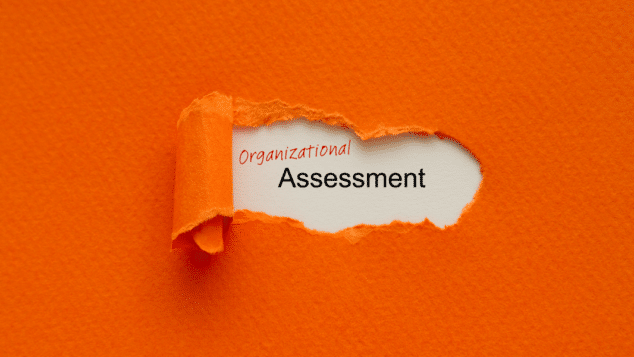6 Steps to an Effective and Inclusive Culture (Even if You’re Remote)

Culture is a big focus in today’s remote and hybrid work environments. Everyone talks about it. Many say they miss it. Some fear its demise. But, what is it really? Most importantly, how can leaders foster the engaging and inclusive work culture they and their employees are seeking, even within remote and hybrid work environments? Below are 6 real-life steps leaders can take to cultivate that desirable and inclusive work culture even among distributed workers.
Emily Reineke, CAE of CREW Network has been keenly focused on culture within her organization’s newly hybrid work environment. She sees a noticeable difference in the energy demands and time management required between in-office and at-home days. As she points out, the “in-office days look and feel different” and it “requires a different approach to manage energy in a ‘day of peopling.’”
Similarly, Jill Hronek of the Society for Laboratory Automation and Screening (SLAS), has seen a shift in their culture, even though they have been a remote-first organization for several years. When COVID forced their membership to engage more virtually, she and her colleagues found themselves modeling better remote work practices. In particular, they focused on improving their communications. “Effective communications are absolutely critical to ensuring our work gets done well and that there are no gaps or overlaps. If anything, our culture has veered toward over-communicating now to make sure we all know who is responsible for which action and we can hold each other accountable.”
Creating a Desirable, Effective and Inclusive Work Culture
Having an “office culture” is one thing. Having a meaningful, engaging, and inclusive work culture can be quite another.
Not every work culture is desirable or effective, yet study after study reinforces that (1) most workers desire meaningful, engaging and inclusive work cultures, and (2) the most productive and effective organizations are those with engaged and inclusive workforces.
The good news is that no matter what type of culture your organization has now, there are ways to improve it.
The even better news is that “culture” is not dependent on four walls – it can evolve to be more meaningful, engaging, and inclusive without physical office space. In fact, remote and hybrid work environments are extremely well-suited to fostering more desirable, effective, and inclusive cultures if leaders are intentional about revving it up.
The 6 Critical Steps to Cultivating a Desirable, Effective and Inclusive Work Culture
As both Reineke and Hronek demonstrate, (re)establishing a desirable and effective work culture is critical in both hybrid and remote work environments. Leaders in both types of environments have a unique opportunity to create an effective and desirable work culture without the constraints of geography or walls. However, doing so requires thoughtful execution. Inclusive and effective cultures don’t just happen, they are cultivated.
Step 1 – Be intentional.
There is no one right way to optimize a remote or hybrid culture. Each organization, each leader, and each worker must be intentional about working every day to create the culture that is most effective and desirable for them. As Hronek points out, “you have to know your ‘why’ and you have to make each thing count.” If an organization wants employees to meet in-person, then be sure to know why it is important to meet in-person versus remotely. There are many valid reasons for wanting, expecting, and requiring in-person meetings. However, the key is for leaders to know why in-person is needed, and to articulate that reason to all.
Step 2 – Set clear work expectations.
Tell employees everything they need to know to be successful, even if it may seem obvious. Not every person or organization works the same way. Help them by providing clear guidelines for how you expect them to achieve that success.
As Hronek points out, setting expectations does not mean laying out Draconian laws; rather, establish clear guidelines for what is or is not acceptable, and allow flexibility where you can. At SLAS, for example, they “believe in seeing each other on-screen, so regardless of time or location, the expectation is that you will be on screen for the majority of the meeting, though there are allowances.” This guideline clearly sets the expectation, and the visual interaction helps the team stay connected – a win-win.
Step 3 – Provide thoughtful and ongoing coaching.
Employees do not need cheerleaders as much as they need coaches. They need managers and mentors who can provide structure, guidance, feedback, insights, and advice, along with encouragement and recognition, on a regular basis. Setting annual goals and only checking in mid-year will not optimize their success or the organization.
Thoughtful coaching also means being inclusive. Employees don’t leave jobs, they leave managers. To be successful and to cultivate a desirable and effective culture, managers must be inclusive coaches. As studies by Boston Consulting Group (BCG) attest, “our results show that people, not policies, are the primary sources of exclusion, and that direct managers and peers have a disproportionate impact on the experiences of their colleagues from non-majority groups.” How Each of Us Influence Workplace Inclusion, 2021.
Step 4 – Foster meaningful connections.
After a few months of the COVID-forced shift to remote work, many people claimed they missed the “office culture.” In reality, what they missed most were social connections – sharing pleasantries with others in the hallway, grabbing an unplanned coffee with a colleague, or “swinging by” to bounce an idea off of an officemate. Research shows that connectedness is absolutely critical to well-being and to an inclusive culture: “Psychologists have long identified the desire to feel connected to others as a basic human need, and interpersonal relationships have a significant impact on our mental health, health behavior, physical health, and mortality risk. Our physiological systems are highly responsive to positive social interactions.” Social Relationships and Health: A Flashpoint for Health Policy, 2010.
Reineke is a strong proponent of connectedness too, sharing that “whether I am in-person or on-screen, I try to meet with colleagues one-on-one as much as I can to make deeper connections.”
Step 5 – Model the values, practices, and behaviors you seek.
Modeling is one of the most effective methods for influencing the behaviors you want to happen. Employees are constantly watching what leaders do. If a leader wants to promote a remote-first work environment, then they must model that by working remotely themselves. They cannot succeed in being “remote-first” if they are consistently in the office. Likewise, if the organization says it values equality and equity, then leaders must intentionally model equal and equitable practices – for example, making it a point to engage remote or “dialed in” employees equally in meetings, asking for their input, and opening opportunities for them to speak up so they can participate equally in the meeting discussion.
Frontline managers are the key to success in modeling. Managers have the greatest influence on employee engagement, and by extension, employee happiness and success. As described in one BCG study, “[s]enior executives set the strategic agenda, but it’s up to line managers to implement change on the ground. No inclusion effort can succeed without their buy-in.” It’s Frontline Leaders who Make or Break Progress on Diversity, 2020.
Step 6 – Consider Adopting a CHIME culture. (The 5 Key Traits of desirable work cultures.)
Across a multitude of research, the cumulative results show that the most desirable and effective work cultures share 5 key traits – meaning these cultures “CHIME”:
- Connected – They foster meaningful connections with others.
- Healthy – They promote health, happiness, and well-being.
- Inclusive – They actively include everyone, seek out diversity, and promote authenticity.
- Modeled by leaders – Leaders model the actions and behaviors they seek.
- Engaging of all staff – They prioritize engaging employees in all aspects of the organization.
The “CHIME” acronym is fitting in any discussion of culture, because the most effective cultures have a buzz and a harmony to them – a “melodious ring.” In today’s remote and hybrid work environments, many leaders (and employees!) desire that cultural buzz, while simultaneously fearing its demise.
In Steps 1 through 5 above, we addressed connectedness, modeling, and engagement. However, we cannot overstate the importance of health and inclusivity to creating a desirable culture.
Organizations that promote health, happiness, and well-being catapult themselves forward in achieving a desirable and effective culture. A 2018 international BCG study found that “employees who indicate they are happy at work are 1.5 times more likely, compared with those who are unhappy, to say they always want to give their best. Workers who report they are unhappy at work, by contrast, are 4.6 times more likely to indicate they will probably leave their current employer within six months. Unhappiness also contributes to missed workdays and lower productivity.” How Diverse Leadership Teams Boost Innovation, 2018.
Finally, diversity and inclusion are clearly two critical elements to creating a desirable and effective culture. Data from numerous studies support the benefits of these elements. For example, “Companies that reported above-average diversity on their management teams also reported innovation revenue that was 19 percentage points higher than that of companies with below-average leadership diversity—45% of total revenue versus just 26%.” How Diverse Leadership Teams Boost Innovation, 2018.
In its most recent study in 2021, BCG found that “of employees who reported they work in an inclusive culture, 81% also said they are happy in their jobs—three times more than those who don’t feel included.” Moreover, “only 23% of employees in noninclusive companies reported that they think their managers will support them when things get hard.” Inclusive Cultures Have Happier, Healthier Workers, 2021.
As leaders navigate this ‘next’ normal of hybrid and remote work, having a work culture that “CHIME-s” will not only create an engaged workforce, but it will create a workforce that is happier and healthier and more able and willing to commit to your organization’s mission.
Tags
Related Articles
ASGE’s Commitment to Supporting the LGBTQ+ Physicians in GI through Allyship and Education
Read about one association's efforts to pave the way for equity and inclusion for the...
Is an Organizational Assessment Right for Your Association?
This evaluation process helps associations identify their strengths, weaknesses, and opportunities inherent in an association's...
How to Celebrate AAPI Heritage Month
Asian Americans have made tremendous contributions to the association industry and the diverse fabric of...






